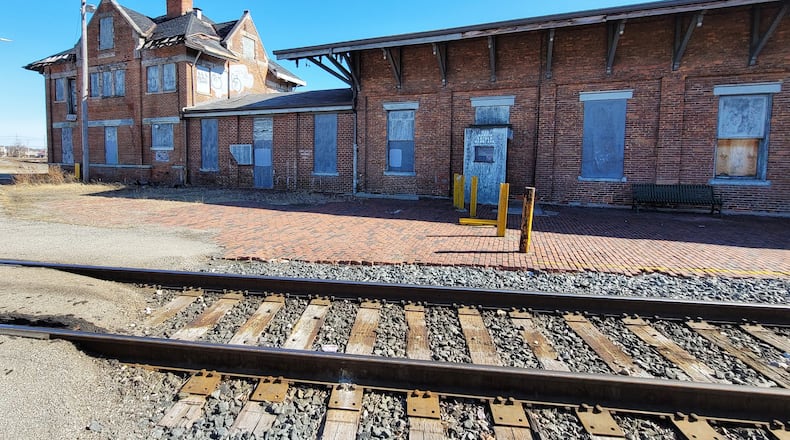One location now being considered as a new location for a single-story part of the train station is the city’s Marcum Park, although Smith told council the city has learned the place in the park that had been considered would cost an extra $150,000 to move utilities to make that possible.
Council members said they are feeling pressure from residents on both sides. There was strong advocacy at Wednesday’s council meeting by proponents for saving the mid-1800s station where presidents Lincoln, Eisenhower and Truman stopped.
Six people spoke on behalf of saving the station, and eight emails were read from people supporting saving the station, even though — as some of the proponents noted — a future use for it has not yet been determined.
The CHAPS (Citizens for Historic and Preservation Services of Butler County) board of directors also wrote, noting it had collected more than 1,700 signatures in favor of saving the station.
Among the messages of support, one woman reminisced about waiting at the station for an older relative to arrive from California. Resident Karen Whalen wrote that if Hamilton saves the station, “City Council will be on the right side of history.”
After Smith requested postponement of the vote until June 9, Vice Mayor Eric Pohlman, an advocate of saving it, said he didn’t want to wait. “In my opinion, I think it should be voted upon,” he said, even if that means members of council would vote against saving it. Pohlman noted he recently visited a train station in Kentucky that had been converted to a restaurant.
“I think it’s a good gamble,” Pohlman said.
But Council Member Carla Fiehrer said she believes “it’s irresponsible for us to rush into it” without knowing more. She said she fears moving the station could wind up costing double the estimated $600,000. As someone who has rehabbed a historic building, she said she knows costs can spiral, and “once you start it, there’s no going back.”
Council Member Susan Vaughn said people have been asking her where the city would get the money for the station work, which does not include repairing it. She said she hopes city government won’t bear the entire financial burden for the project, and said she believes it’s important “to know as much as we can know” before taking a vote.
Vaughn also noted that train stations that were successfully saved have had things in common: A purpose, a plan for how it would be continued into the future, and funding.
Mayor Pat Moeller, who has pushed hardest to save the station, said he preferred to postpone the vote until June 9. “Hopefully, we do save it,” he said. All voted to table the legislation except Pohlman.
About the Author

